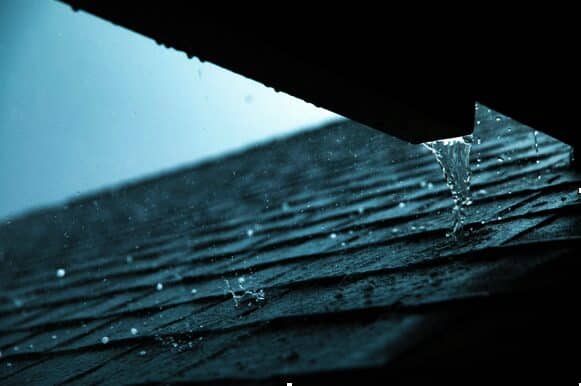Insurance Litigation Attorney Guide: So Your Tree Fell on Your House
For Texas homeowners, hurricanes and hailstorms can lead to severe property damage, and fallen trees are often a major consequence. These fallen trees don’t just disrupt daily life; they can cause significant structural damage and unexpected costs. Many homeowners think insurance will immediately cover this kind of damage, but claims involving fallen trees can be complex and frustrating to navigate. While our law firm does not take on neighbor damage claims normally, we do have recommendations on how to move forward!
With each storm season, Texans face unique insurance challenges, especially regarding roof damage and tree-related damage claims. In many cases, insurance companies may flat out deny these claims, leaving homeowners bearing unexpected expenses during a vulnerable time. Here’s what you need to know to prepare.
What You Will Learn:
- Understanding insurance coverage for tree damage
- How claims are typically handled and common obstacles
- How an insurance litigation attorney can assist with denied or underpaid claims
- Practical steps to strengthen your claim after a storm
Understanding Insurance Coverage for Tree Damage
What Homeowners Need to Know About Their Policies
Insurance coverage for tree damage varies widely depending on the policy. Homeowners may assume that any tree-related damage will be fully covered, but insurers often view these claims through a narrow lens. Standard homeowners insurance policies usually cover damage when a tree falls due to a named peril—such as wind, hail, or lightning—but some may exclude tree-related damage under certain conditions.
Insurers frequently categorize damage from fallen trees based on its cause and location. If a tree is on your property and falls, causing damage to your home or other insured structures, you are more likely to receive coverage. However, if the fallen tree did not result from an event covered under your policy or if it shows signs of pre-existing health issues, your insurer may deny coverage.
⚠️ PLEASE REMEMBER ⚠️ You are responsible for maintaining your home. If you know there is a tree that needs to be trimmed, cut down, or something else, you have a responsibility within your policy to do so. The same rings true for most of your homeowner duties, you have a responsibility to clean out gutters before and after storms, inspect your roof after hail or heavy winds, and other duties.
Here Are Lawyer Approved Tips for Ways Homeowners Can Be Proactive About Caring for Trees on Their Property:
- Schedule Regular Inspections: Hire a certified arborist to inspect trees as needed, identifying any health issues or risks early.
- Prune Dead or Damaged Branches: Regularly remove dead, diseased, or weak branches to reduce the risk of breakage during storms.
- Water Trees Consistently: Ensure trees receive adequate water, especially in drought-prone areas, to maintain their health and stability.
- Mulch Around Tree Bases: Add mulch around the base of trees to retain moisture, regulate soil temperature, and promote healthy root growth.
- Monitor Tree Health: Keep an eye out for signs of disease or decay, such as discoloration, fungus growth, or bark peeling.
- Remove Hazardous Trees: If a tree shows severe signs of instability or disease, consider removing it to prevent potential property damage.
- Protect Roots from Compaction: Avoid parking vehicles or placing heavy equipment near trees to prevent root damage, which can affect stability.
- Create Wind Barriers: Plant smaller trees or shrubs around taller trees to serve as windbreaks, providing extra protection during storms.
- Check Soil Conditions Regularly: Ensure soil drainage around trees is adequate to prevent root rot and other health issues.
These proactive steps not only help maintain the health of your trees but also demonstrate responsible property upkeep, which can be useful if you need to file an insurance claim related to tree damage. Homeowners should also understand policy exclusions, as they are often used to justify denials. Some policies may exclude coverage if the tree damage is due to “wear and tear” or lack of maintenance. For instance, if an old or diseased tree falls, your insurer might attribute it to neglect rather than storm damage. Policy limits may also restrict the amount of compensation you receive. Many policies impose specific limits for tree removal or property repairs.
Common Hurdles in Tree Damage Claims
Challenges Texas Homeowners Often Face When Filing Claims
When filing a claim for tree-related damage, Texas homeowners frequently encounter specific challenges. Insurers may argue that tree damage results from gradual wear and tear, especially if the tree has pre-existing health issues. This can lead to claim denials or reduced payouts, leaving homeowners responsible for costs they expected insurance to cover. It’s important that you understand the integrity and value of your home and property so that you can advocate for your claim.
Delay Tactics Used by Insurance Companies
Insurance companies sometimes use delay tactics, especially during storm season when claim volumes are high. These tactics can result in long wait times for homeowners seeking coverage for urgent repairs. If you’ve gone more than 30 days without hearing a word from your insurance company, when you’ve sent multiple communication attempts, we highly recommend getting in touch with our law firm.
Claims Often Underpaid Due to “Partial Coverage”
Another common issue is partial coverage for tree damage, where insurers offer only limited compensation for repairs. They may classify part of the damage as non-insurable, attributing it to property wear rather than storm impact. This tactic can leave homeowners covering out-of-pocket costs. A roof damage lawyer with experience in claim negotiations can help increase the likelihood of a fair payout. Keep in mind that most tree damage claims that do not impact your home’s structure may not be recoverable, but we still recommend getting in touch with our law firm so that we can review your claim.
Strengthening Your Tree Damage Claim: Tips from an Insurance Litigation Attorney
Key Steps for Texas Homeowners After a Storm
Documentation is essential when preparing a claim for tree damage. After a storm, take photos and videos of the damage to provide a comprehensive record. Be sure to include images from different angles, capturing the extent of damage to your property, roof, and surrounding area. An insurance claim attorney often emphasizes the importance of clear and organized evidence, as it strengthens your position.
Document the Tree’s Condition and Impact on Property
Include specific details on the tree’s location and size, as well as the impact on nearby structures. If the tree fell due to storm damage, having documentation of its healthy condition before the storm can counter arguments about neglect. Evidence of regular tree maintenance can help support your claim.
Engage Experts for Property Assessments
Obtaining a professional property assessment from an arborist or contractor can support your claim. These experts can assess the tree’s health and provide evidence that it fell due to storm impact, not neglect. An insurance litigation attorney can help you understand how to use these assessments effectively in your claim.
How an Insurance Litigation Attorney Can Help
When Claims Are Denied, Delayed, or Underpaid
Insurance litigation attorneys specialize in understanding and countering insurance company tactics. When claims are delayed or undervalued, they can help by intervening on your behalf and ensuring your insurer follows fair practices. For Texas homeowners facing financial strain due to underpaid claims, an attorney’s involvement can make a significant difference.
Appealing a Denied Claim
If your claim is denied, an attorney can help you gather evidence and build a case for appeal. They can identify discrepancies in how your claim was handled, including any unfair use of exclusions. The appeal process can be complex, but a property damage lawyer can increase your chances of a successful outcome.
Negotiating Fair Compensation for Underpaid Claims
Insurers often undervalue claims by only covering partial damage, leaving homeowners with uncovered repair costs. An insurance litigation attorney can negotiate with insurers for fair compensation, often reaching settlements that better cover the extent of your losses. Our end goal will always be that the insurance company does the heavy lifting for your repairs, not you.
Roof Damage Considerations After Tree Falls
Recognizing and Documenting Roof Damage for Insurance Claims
Tree falls often lead to extensive roof damage, requiring immediate attention to protect the safety and integrity of your home. Since roof repairs can be costly, having clear documentation is essential to support a thorough claim. A roof damage lawyer may recommend obtaining repair estimates from licensed contractors to support your claim amount.
Types of Roof Damage to Document
After a tree fall, inspect your roof for structural and surface damage, including cracked shingles, damaged flashing, and leaks. Even minor damage can worsen over time, so documenting these issues helps establish the full extent of repairs needed.
Addressing Disputes Over Roof Damage Coverage
Insurance companies sometimes dispute roof damage claims, arguing that part of the roof damage existed before the incident. Working with an insurance claim attorney can help challenge these assessments and substantiate the need for complete roof repairs.
Preparing for Texas Storm Seasons: Tips from an Insurance Litigation Attorney
Why Regular Maintenance Can Impact Your Insurance Claim
Texas homeowners should take proactive steps to maintain their property, especially trees and roofing, before the storm season. Regular maintenance demonstrates to insurers that you take reasonable measures to prevent property damage. Some insurance policies may reduce payouts if they determine negligence played a role in the damage, so keeping maintenance records is wise.
Tips for Maintaining Trees and Roofs Year-Round
Schedule tree inspections at least once per year to assess tree health and remove any dead or diseased branches. For roofs, conduct seasonal inspections to spot early signs of wear, particularly before storm season. These steps are not only important for preventing damage but may also serve as proof that your property was well-maintained.
Documentation to Prepare Before Storm Season
Document all maintenance activities with receipts, photos, and service records. This information may help prove your case if you need to file a claim. Consulting an insurance litigation attorney can provide further guidance on the type of documentation that strengthens your claims.
Stormlex Alliance Newsletter
Join the Stormlex Alliance: a newsletter dedicated to educating you on insurance policy terms, tips for navigating the claims process, and weather-related prevention tips for your home or commercial property in Texas.
We throw in a weekly Star Wars meme for your entertainment and laughter, too! Who said we can’t have fun in your inbox?
If you reside in San Antonio, Dallas, Austin or another city in Texas and have sustained hail, rain, or other weather related damage to your home,, this newsletter is a must-subscribe to reach your optimal Jedi master level of your insurance policy and your rights for a maximized claim payout!
Featured Photo by Ellen Tanner on Unsplash


















